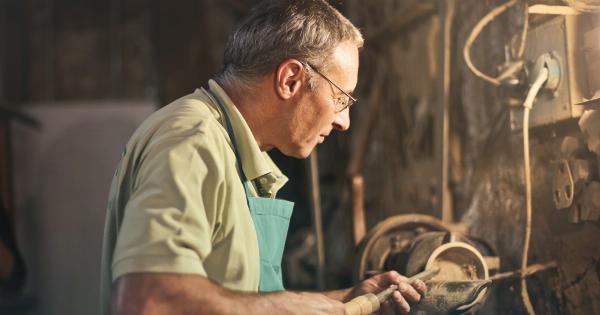Technology has come such a long way that it has revolutionized the way we live our lives today. The medical advancements are no exception.
In a world where IVF and stem cell technology are becoming more and more popular, a woman from the United States has given birth to a baby using her own stem cells. This groundbreaking birth has opened up a whole new paradigm for scientists to explore.
The Journey to Motherhood
Sarah, a 35-year-old woman from California, had tried to conceive a child for five years but was unsuccessful. Her husband, Jake, was also diagnosed with low sperm count. This left them with few options to start a family of their own.
However, they never gave up hope and decided to explore IVF treatment as an option to conceive a child.
After months of consultation with different fertility clinics, Sarah and Jake settled on the Pacific Fertility Center (PFC) in San Francisco, where they underwent traditional IVF treatment.
PFC is among the few fertility clinics that offer IVF and stem cell treatment options, making it one of the best choices for couples like Sarah and Jake.
The IVF and Stem Cell Treatment
At PFC, Sarah’s eggs were collected and fertilized with Jake’s sperm in a laboratory. This process created multiple embryos, which were screened for genetic abnormalities.
Once the embryos with the healthiest cells were identified, one was implanted in Sarah’s uterus.
After an unsuccessful cycle of IVF, PFC introduced them to a new technique that uses the patient’s own stem cells to boost the chances of conception.
By using stem cells, PFC believes they can increase the chances of embryo development, increase implantation rates, and improve overall embryo quality. This technique is known as IVF-assisted stem cells.
The stem cells are administered through an intrauterine injection before a new embryo is implanted.
In Sarah’s case, after implantation, the stem cells were given a “homing signal” so that they migrate to the embryo to provide nourishment and support which would help ensure its survival. In essence, the stem cells aided the embryo in forming a strong bond with the uterine wall and increased the odds of the pregnancy resulting in childbirth.
The Successful Pregnancy and Birth
It took a few months for Sarah to conceive, but the treatment was successful. She was able to carry the pregnancy full term, and she recently gave birth to a beautiful baby girl.
Both Sarah and Jake were overjoyed and amazed that their dream of becoming parents had finally come true.
According to Dr.
Carolyn Givens, PFC’s director of embryology, “Sarah’s use of her own stem cells in IVF may very well have been the difference-maker in the success of her treatment.” The stem cells significantly boosted the chances of embryo implantation and development, making it one of the most successful IVF treatments offered by PFC.
What This Means for the Future of IVF and Stem Cells
This groundbreaking birth has shown that the use of stem cells in IVF can significantly improve embryo implantation, development, and overall pregnancy success.
As a result, scientists expect that this technique will become more widespread across fertility clinics and be used as a standard part of the IVF treatment process.
Furthermore, it also opens the door to new possibilities for stem cell research.
Embryonic stem cells have the potential to differentiate into almost any cell type and tissue in the human body, and the use of stem cells in IVF could provide the chance to explore the different ways stem cells could be used in medicine. Stem cell research is already showing promising results in the field of regenerative medicine, and this breakthrough may accelerate research efforts and bring new medical treatments and innovations.
Conclusion: A Revolutionary Breakthrough
This groundbreaking birth has not only given Sarah and Jake the gift of a baby girl but has also provided the world of science with new hopes for medical advancements.
The use of stem cells in IVF assisted treatment has many potential benefits, providing an opportunity to explore stem cell research, regenerative medicine, and new treatments. This recent success illustrates the potential of combining traditional treatments with cutting-edge advancements, yielding incredible results.





























